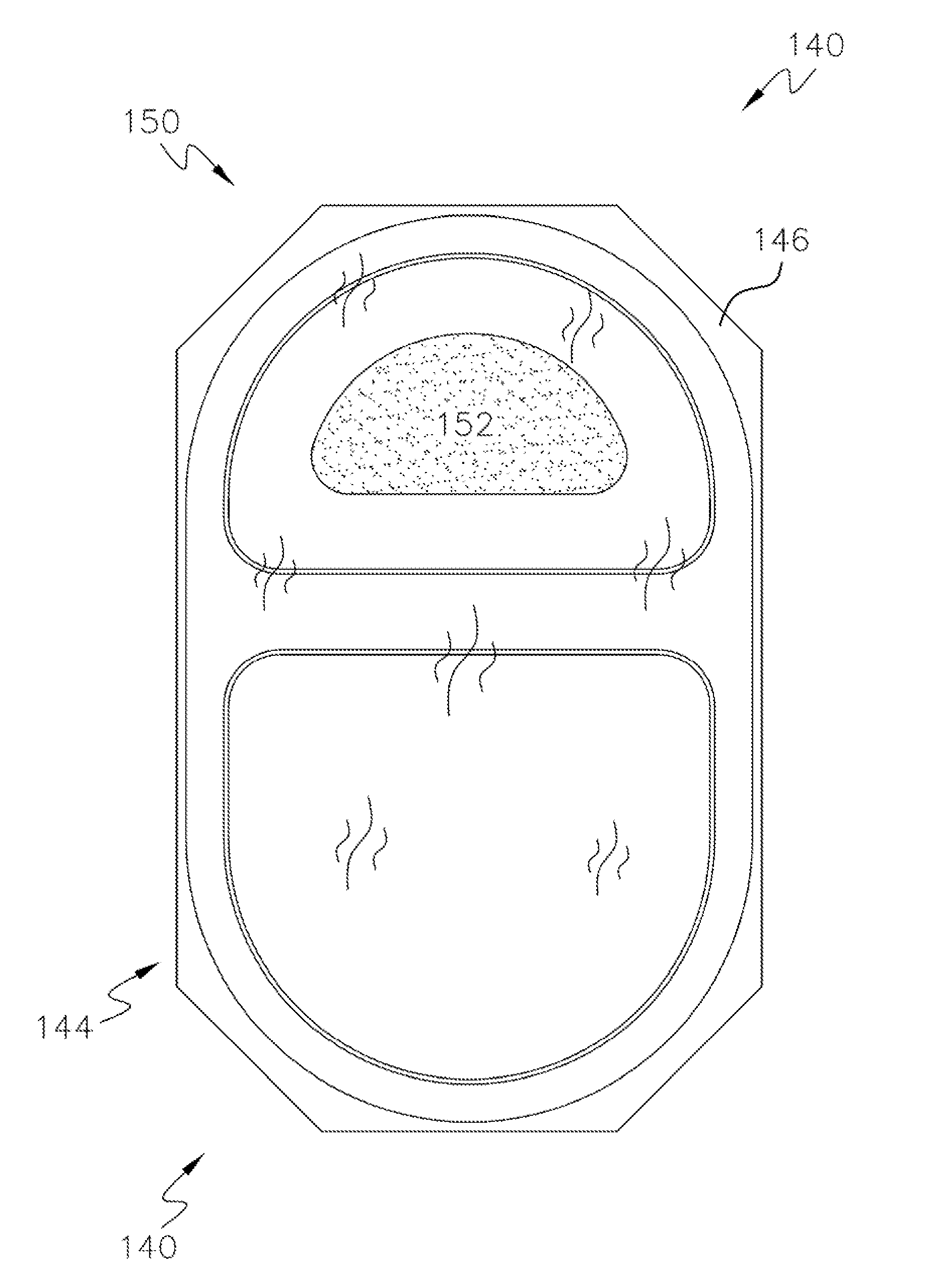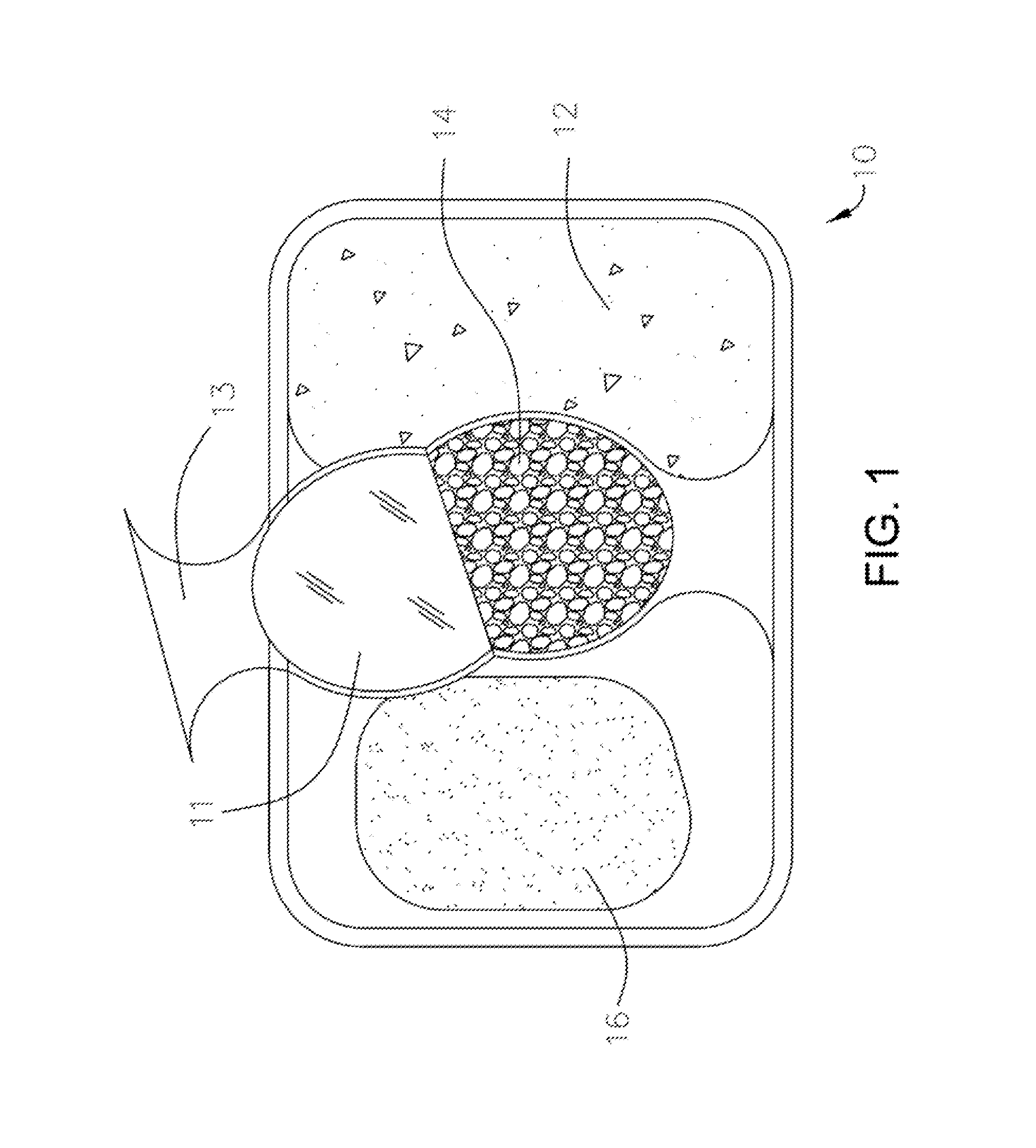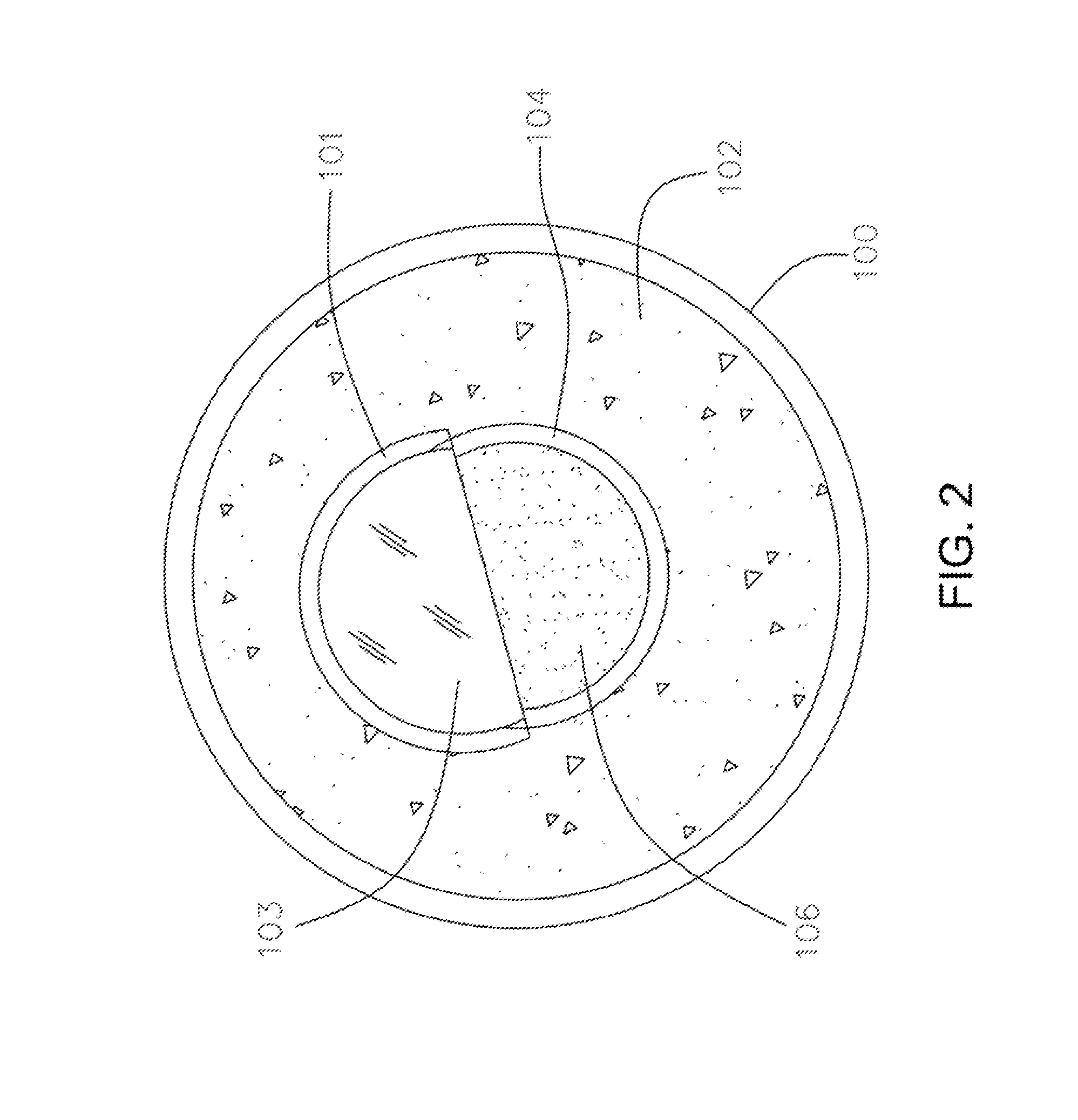Microwave cooking containers with shielding
a technology for microwave cooking and shielding elements, applied in the field of microwave cooking containers, can solve the problems of increased risk of arcing or sparking during microwave cooking, unfavorable microwave cooking, and unfavorable microwave cooking
- Summary
- Abstract
- Description
- Claims
- Application Information
AI Technical Summary
Problems solved by technology
Method used
Image
Examples
example 1
[0051]The experiments of Example 1 were performed on a microwave container comprising CPET as the microwave-transparent container material and aluminum foil as the shielding material. The microwave container tested comprised a two-compartment container having the general shape shown in FIGS. 6-8. More particularly, the container comprised a first shield comprising a base having a semi-circle shape with rounded edges, defined by a perimeter of the base. The base comprised a plurality of sidewalls extending upwardly from the perimeter of the base and having an upper edge comprising a lip extending radially from the upper edge of the sidewalls. The height of the sidewalls was one and one-quarter inches, which was approximately the same height as the sidewalls of the container compartment. The lidding comprised a second microwave shield disposed on and adhered to the center of the lidding, separated from the perimeter or upper edges of the sidewalls by one half of an inch. Applesauce wa...
example 3
[0057]The experiments of Example 3 were performed on microwave containers comprising CPET as the microwave-transparent container material and comprising aluminum foil as the shielding material. Each microwave container tested comprised a first shield of varied size and location on the outside of a two-compartment container having the general shape shown in FIGS. 6-8 and described in Example 1. Further, each microwave container tested comprised a second shield of varied size affixed to the lidding. The aspects varied on the first shield were the height of the sidewalls and the radius of the aperture on the base of the shield. The aspect varied on the second shield was the distance provided between the outer perimeter of the second shield and the container sidewalls. The height of the sidewalls ranged from three quarters of an inch to one and one-quarter inches (i.e., full height). The radius of the aperture ranged from one quarter of an inch to three quarters of an inch. The gap betw...
example 4
[0060]The experiments of Example 4 were performed according to the materials and procedures of Example 3, except that each frozen shielded container was cooked for three minutes and forty-five seconds in a different 805 watt Panasonic microwave oven.
[0061]FIG. 15 shows a bar graph with the experimental results following microwave cooking of the frozen applesauce and macaroni and cheese. Surprisingly, the microwave shields comprising the configuration of the full height of the sidewalls of the first shield of one and one-quarter inches and an aperture radius of three quarters of an inch, plus a distance between the second shield and the container sidewalls of one half on an inch provided the same temperatures of applesauce and macaroni and cheese, despite an additional thirty seconds of heating. This configuration again provided optimal heating characteristics, in combination with a low risk of arcing or sparking during cooking due to the horizontal gap between the two shields.
PUM
 Login to View More
Login to View More Abstract
Description
Claims
Application Information
 Login to View More
Login to View More - R&D
- Intellectual Property
- Life Sciences
- Materials
- Tech Scout
- Unparalleled Data Quality
- Higher Quality Content
- 60% Fewer Hallucinations
Browse by: Latest US Patents, China's latest patents, Technical Efficacy Thesaurus, Application Domain, Technology Topic, Popular Technical Reports.
© 2025 PatSnap. All rights reserved.Legal|Privacy policy|Modern Slavery Act Transparency Statement|Sitemap|About US| Contact US: help@patsnap.com



